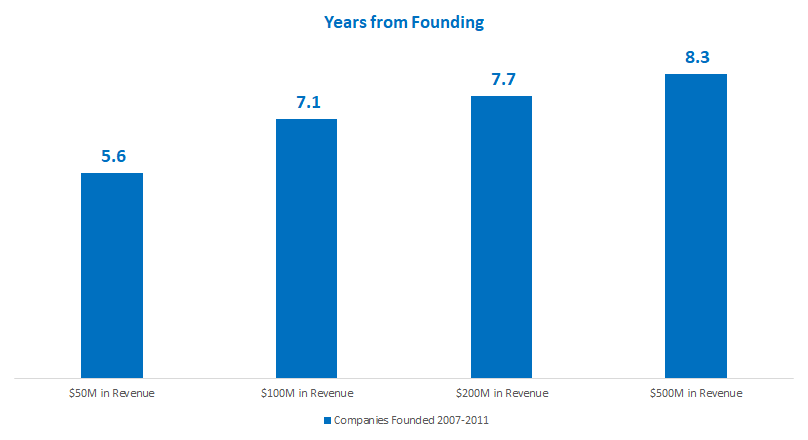The Myth of Betting Big
The Myth of Betting Big
Why deep pockets don’t always deliver growth.
by Phil Orr & Max Wessel


Over the last decade, digital transformation has gone from a forward looking concept to the topic discussed at every board meeting. That rush of attention has led to massive investments into digital growth in blue chip companies around the world. A quick search of LinkedIn reveals that GE deployed 6,500 people in GE Digital at its height. Walmart Labs is a nearly 2,600 person innovation engine. Cruise Automation, GM’s AV subsidiary, is nearly 1,100 people and growing at close to 100% a year.
Not only is digital transformation on top of everyone’s mind, but it’s leading to these massive investments into the next big thing (e.g., 1, 2, 3). The question is whether betting big is actually the right way to transform an age old business. It’s enticing to believe that throwing the weight and resources of a giant is an advantage when vying for new and growing markets if you want to compete with agile, young, upstarts. We’d actually suggest that willingness to bet big is exactly wrong.
Our careers have spanned corporate innovation and the startup world. Between the two of us we’ve worked with hundreds of technology companies — from seed-stage teams to organizations of over 50,000 employees. And while innovation is a priority at all of them, investment levels seem to matter much more to already-large companies than to growing ones.
Across corporate campuses, the metrics used to evaluate projects — person-hours or ROI for example — lead management to think of innovation in similar terms. If a small army is deployed, it can crush any town militia. Many people-years trump few. Hence, transformative innovation projects are often massive, highly-marketed undertakings with huge budgets.
But reality is actually quite different. And it’s the numbers that tell the story. Simply consider an example from our industry (software); the size of companies that IPO and reach $100 million in revenue. In software, $100 million is a high threshold.
$100 million in cloud revenue can yield a multi-billion dollar valuation. Few companies achieve the feat. And those that do tend not to be helmed by the hordes of employees that corporate executives seem to imagine. In fact, it’s the opposite. Companies regularly pass the threshold with far fewer people than you’d expect. And most of these small companies achieve the feat while maintaining phenomenal growth rates.


We should caveat that for those of us who’ve lived in startup land, the scale of hundreds of people can seem enormous. But for General Electric, a company of hundreds of thousands, hundreds of employees can be a rounding error. And there are countless examples of lean upstarts formidably competing with corporate behemoths: At its acquisition by Salesforce, ExactTarget had 1,800 employees. MailChimp, while generating more revenue, has 800. Tanium has only one-thirteenth the employee count of Symantec, but is half as valuable. Cloudflare powers 10 million domains and has only ~800 employees, while AWS has 30,000+. Looker has ~550 while Tableau has 3,500.
In our experience, success and failure in the process of building something new comes down to three constructs. While massive investment can help in certain situations, it’s not the ultimate judge of success. In fact, it can even be counterproductive. It’s much more important that for the CEOs trying to drive their transformation forward they ensure that their teams have Focus, Patience, and an Optimized Operating Model.
Focus
When big companies “Bet Big” they often bet on markets. For instance, Daimler has a division devoted to car sharing, ride hailing, and other forms of smart mobility. They bet big on a critical category — and that category demands bold investment.
But when innovation occurs, it doesn’t occur at the category level. It occurs at the product level. Despite its experiments, Uber is a company disrupting the transportation industry with a single product offering. It’s not spreading its bets across anything and everything touching smart mobility. It seems obvious, but without focus, a company innovates for the sake of innovation.
Amazon appears to have nailed the focus problem. While the company runs independent labs for innovating in hardware and search, Amazon’s focus is best exemplified in the rest of the company. In the early days, Bezos was famous for his two pizza team structure, and today Amazon still operates like a collection of individual companies.
These “companies” are all aligned on a common mission but free to operate as independent startups while leveraging the ever-growing resources of the broader company (all accessible via internal, externalizable APIs no less). This organizational structure has delivered some incredible results like AWS, Fulfillment by Amazon, Prime, Kindle, and Alexa while retaining a strong connection and relevance to the core business. Focus is paramount at Amazon, because your company’s success is actually your team’s success.
Operating Model
If focus is the North Star, an effective operating model is the engine. Innovation doesn’t occur in a vacuum. Companies must encourage and protect innovation: shielding innovators from the slowdowns of corporate overhead while providing innovators with access to deliver unfair advantages and shortcuts to success. Properly integrating organizational structure, go-to-market and incentives, product and data access, marketing and communications, and all other operating procedures must be properly thought through to provide the right springboard for innovation.
Google has shown the world what innovation at scale looks like. The famous “20% time” has birthed numerous hits for the company, like Gmail and AdSense. M&A like Android and YouTube have been company-defining. Critics argue these simply strengthened the core rather than taking the company to new spaces.
They’re not wrong, but the point is Google embedded innovation in its culture with certain organizational decisions it made. The 2015 Alphabet restructuring addressed the criticism, creating a formal mechanism for dedicated teams to work on “bets” that were well outside Google’s core (while still leveraging the company’s strengths). Alphabet has been perhaps the most aggressive of the large technology giants in properly carving out dedicated operating structures to drive non-core innovation.
Patience
While a lot of companies get model and focus right, many still fail to provide new innovations of meaningful magnitude. Why? For a multitude of reasons, companies tend to underestimate the time it takes for new innovations to play out.
A focused operating model fostering innovation is a prerequisite for innovation. But the biggest obstacle for large companies in building sustainable innovation machines? Their own patience. Many, but not all, corporations tend to think about their plans in one-, two- or three-year timeframes. They may have five or ten-year company strategies, but the comprising initiatives often come with short shelf lives. When something is delivering less-than-stellar results, executives tend to focus on the most recent fiscal year, or what next year looks like, rather than thinking about the business’s long term trajectory.
It’s true that building a startup is cheaper and faster than ever before, and that small teams can drive out sized impact in a large company. The world is moving quicker than ever, so it’s hard to fault a company for impatience. But the data shows that while the timeline to $100 million or an IPO is compressing, it still takes an average of seven years from founding to cross the $100 million mark. And this is when looking at the successful micro-set of companies that make it to an IPO! A properly organized innovation portfolio will have a mix of strike-outs, singles, doubles, triples and home runs — with a significantly longer average timeline to $100 million.


Thus, corporate innovation programs intending to truly move the needle should allow for a minimum five-year time horizon to fairly judge progress — and even longer if their threshold for “moving the needle” is higher.
For Apple, innovations need to be measured in billions of dollars to be worthwhile — everything else is just a rounding error. At Apple, patience has been paramount. Siri, Touch ID, Apple Music, and Face ID (all powered by acquisitions) all had several years of development logged — either independently or as part of Apple — before taken to market. Project Titan is believed to have been in development since 2014, and the rumored AR glasses are likely a five-plus year endeavor as well. The company clearly understands the value of patience in innovation and thinks in five- or ten-year timelines.
Companies would do well to be mindful of these three principles when forming their innovation initiatives. The temptation to throw large amounts of people at a problem seems intuitive, but focus and a clear swimlane for innovation are the real magic — and patience will be harder to maintain when staring down the investment required for a massive team.
